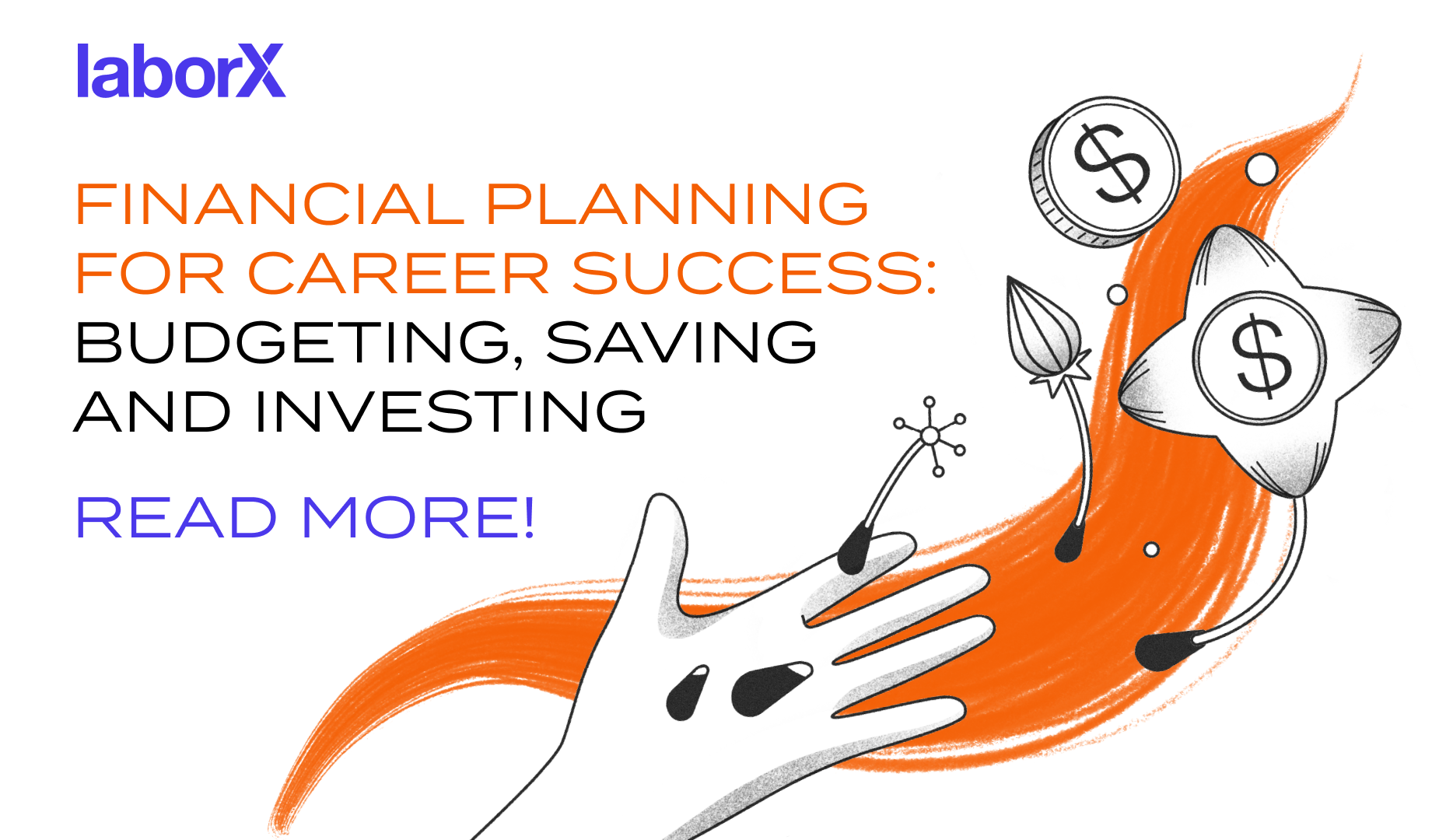
Embracing Change: HR in the World of Digital Assets
Hotcoin’s HR shares her journey from traditional industries to the world of Web3 and crypto, highlighting key insights on thriving in this space.
Read
If you’re serious about making the most out of what you earn, it’s worth spending the time and effort to plan carefully for the future.
Budgeting and planning your finances is simple in theory, more complicated in practice. Many people find it’s a threatening or uncomfortable exercise, and never really give it the thought it deserves. However, it doesn’t have to be difficult. Spending just a few hours understanding your incomings and outgoings might just be the best investment you ever make.
Financial security is an aspiration for most people, but a goal – something they actively work towards – for far fewer. At the highest level, the aim is to ensure that you are spending less than you earn, and investing the remaining funds wisely for the future. Ultimately, this will give you choices you will not otherwise have. You may want to retire early, or simply to have the money to choose how much you work, without having to worry about living hand-to-mouth.
Whatever your goal, the starting point is ensuring you have a detailed understanding of your finances. Create a spreadsheet, with your income at the top, and then categories for everything you spend: rent or mortgage payments; electricity, water, internet and other utilities; credit cards and other debt repayments; food; subscriptions like Netflix, Amazon, Spotify, and so on; entertainment, and anything else that comes out of your account.
Some categories will vary. You may spend a different amount on eating out each week, for example. And you may not earn the same amount every month, especially if you are a freelancer. If that’s the case, estimate your income conservatively, and include an upper figure for outgoings you’re not sure about.
At the end, you will have two figures: one for income, one total for outgoings. If the first is larger than the second, that’s a good start. If not, you’re eating into savings or (more likely) accruing debt every month, which will end up costing you more and more to service. While there are times when that might be necessary, it’s unsustainable in the long run.
At the very least, you’ll want to ensure that you’re breaking even at the end of every month, if not coming out with spare funds to invest.
Go through your spreadsheet and figure out where you’re spending the most money, whether any categories can be cut, and where savings can be made. This is the point at which some hard decisions might be necessary. Do you need to limit the amount you spend on entertainment each month? Do you really need Netflix and Prime and Disney Plus?
Similarly, are any of your outgoings unnecessarily high? For example, would remortgaging result in lower payments? Can you move your credit card debt to a better deal? Can you save money on your gas or electricity bill?
Once you have massaged the figures on your spreadsheet so that your outgoings are less than your income, you have a series of new priorities:
It can help to have different accounts to separate categories of spending. For example, you might keep your emergency fund in a dedicated account, ideally earning interest but still accessible at any time.
If you’ve got this far – balancing your budget month-to-month, and putting aside a six-month emergency fund – then you’re in better shape than a lot of people.
At this point, it’s time to take what you can afford at the end of every month, and invest it carefully in order to grow it over the long term and provide funds for your future plans (whether that’s full retirement, working fewer hours, travel, etc).
Here’s where the usual disclaimers apply. This is not financial advice, since everyone’s circumstances and risk tolerances will be different, as will their jurisdictions, the assets available to them, and so on. Moreover, the economic landscape is currently in a state of extreme flux, and things are liable to change at a moment’s notice. With that in mind, here are some of the principles to consider, and investments that might make up your portfolio.
The aim of investing is to achieve the highest returns possible, with the lowest amount of risk. Those parameters will be different for everyone. For example, investing in bitcoin and crypto is high risk (lots of volatility), but can be high return. Bonds, on the other hand, are considered safe investments, but offer a low rate of return.
One of the ways investors can reduce risk is by spreading their money over several different investments, and classes of investment. The proportions you opt for will depend on your time frame and other factors.
Stocks are generally the foundation of a long-term portfolio. They allow investors to own a piece of a company, and benefit from its financial success – both through any dividends paid from profits, and capital appreciation. While picking individual stocks is risky, a high degree of diversification can be achieved by buying ETF trackers. These replicate the performance of a sector overall, an index like the S&P500, FTSE100, or even global markets. Stocks can be volatile, declining 30, 40, or even 50% in a major downturn, but perform well over the long term, generally making average annual gains of 7-10% (not taking into account inflation).
Bonds are a safer option than stocks, but offer typically lower gains. They come in many forms, including government bonds (the safest option) and corporate bonds (less safe, but with higher yields). Bonds are the traditional complement to stocks, since they often do well when stocks are falling. For a long time, a 60:40 allocation of stocks to bonds was recommended for a conventional portfolio. The return on bonds depends partly on the interest rate.
Real estate is another popular asset class. Aside from owning your own home, that might mean buying a rental property, or buying a REIT (Real Estate Investment Trust) that allows you to benefit from property ownership with any sum of money, without having to manage it yourself. Average rates of return are typically 7-10% over the long term.
Commodities like gold and silver are popular ways to diversify further. These can be held as physical bullion, or in ETFs and other vehicles that allow you to trade them online. Which you choose will depend on how much you want to hold, and whether you are willing to custody it yourself. Commodities do not pay any income, but offer good diversification. Gold, in particular, has a reputation as a popular hedge against economic turmoil.
Cryptocurrency is a new and fast-growing asset class that offers additional diversification. Bitcoin, the first and most popular crypto, has only been around since 2009, but has already grown at an average rate of around 200% per year for the last decade. However, it is extremely volatile, and in addition to huge moves to the upside ($3,100 in December 2018 to $69,000 in November 2021, for example: over 2,000% in 3 years), it can drop 80-85% in a bear market.
In order to invest in crypto safely, you will need to be comfortable holding your own coins in an external wallet, or else trusting a third-party service to do it for you. It is likely that at some point over the course of this year or next, one or more bitcoin ETFs will be approved, which will make investing in BTC as easy as buying and selling stocks through a traditional broker, opening the way for new money to flow into the asset class.
Other cryptos (alternative crypto coins or ‘altcoins’) are even more volatile and risky than bitcoin, though can bring high returns.
A good tax accountant can be extremely valuable when you are planning your finances, especially if you are dealing with assets like crypto, where there can be a high degree of uncertainty (and in some cases, very little guidance at all). It is vital that you understand the rules and laws for your jurisdiction, and stay up-to-date with any changes.
A tax accountant with experience of the crypto sector will be able to advise you on how to minimise your tax burden. It is not possible to give general advice because the rules are different in every country, but there are often ways to reduce the amount you pay, entirely legally – especially capital gains tax, which is one that can often catch crypto investors out. Although a consultation can be expensive, it is likely that it will pay for itself many times over.
Similarly, an independent financial adviser (IFA) will be able to guide you through the process of setting up investments and discussing what assets are best for you, given your circumstances. Just bear in mind that many IFAs will be cautious about advising their clients to allocate money to crypto, and in some cases will not be allowed to, since they are restricted to recommending only assets and funds that are regulated in the right way.
Lastly, if you’re still struggling to make ends meet, or if you want to increase the amount you have available to invest, one of the best ways is to boost your income. There are a few different possibilities that are open to you:
In all of these areas, whether you’re budgeting, organising your finances, investing, or looking for a new job, the key thing is planning. Just a few hours of careful thought and preparation can make an enormous difference, from which you may benefit for the rest of your life.

Hotcoin’s HR shares her journey from traditional industries to the world of Web3 and crypto, highlighting key insights on thriving in this space.
Read
Discover how Web3 is reshaping HR practices with insights from a leading expert in the field.
Read
Discover Base's innovative L2 solution addressing scalability, security, and user experience challenges in crypto. Learn about Base Incubator by LaborX, fostering growth and innovation within the Base ecosystem.
Read